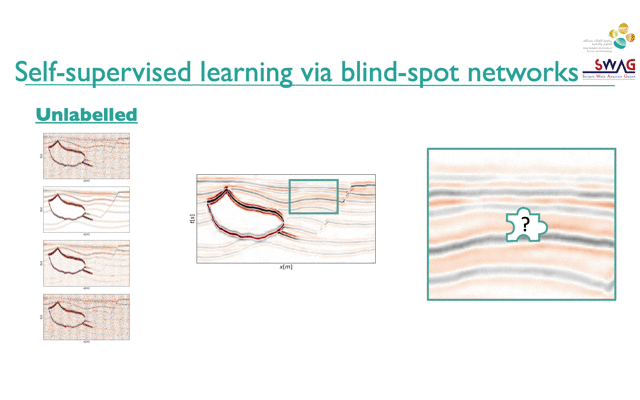Blind-spot denoising on seismic data (Birnie et al., 2021)
Through the application of blind-spot networks, Noise2Void (N2V) removes the unfeasible requirement of clean training data for deep learning denoising applications. By assuming that the noise field is isolated and independent at the pixel level, the network uses neighbouring pixels to predict the central pixel's signal contribution. We adapt the N2V procedure to accommodate for the highly-oscillatory seismic signals and to handle moderately correlated random noise. Under a white, Gaussian noise assumption we illustrate how N2V can successfully denoise seismic data with minimal effect on the seismic properties. For the scenario of random, coloured noise we show how the hyperparameters need significant modification to prevent the network from learning the noise properties alongside the signal properties. However, with this adaptation the N2V procedure is shown to be a powerful denoiser on field seismic data.

References
Birnie, C., Ravasi, M. and Alkhalifah, T., 2021, “Self-supervised learning for random noise suppression in seismic data”, In First International Meeting for Applied Geoscience & Energy (pp. 2869-2873). Society of Exploration Geophysicists.
Birnie, C., Ravasi, M., Alkhalifah, T., and Liu, S., 2021, “The potential of self-supervised networks for random noise suppression in seismic data”, arXiv preprint arXiv:2109.07344
Birnie, C., Ravasi, M. and Alkhalifah, T., 2021, “Self-supervised learning for random noise suppression in seismic data”, In First International Meeting for Applied Geoscience & Energy (pp. 2869-2873). Society of Exploration Geophysicists.
Birnie, C., Ravasi, M., Alkhalifah, T., and Liu, S., 2021, “The potential of self-supervised networks for random noise suppression in seismic data”, arXiv preprint arXiv:2109.07344